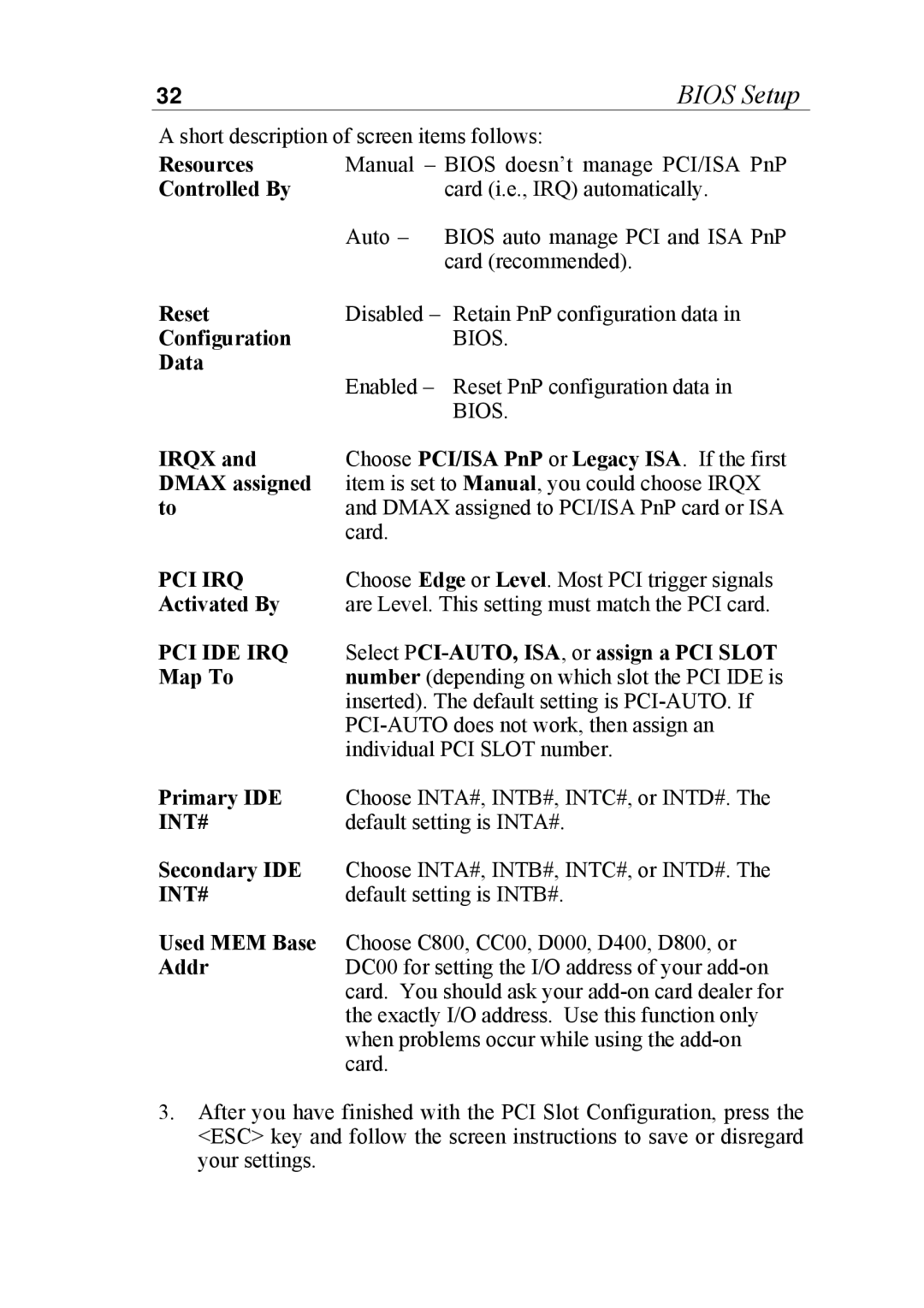32 | BIOS Setup |
A short description of screen items follows:
Resources | Manual Ð BIOS doesnÕt manage PCI/ISA PnP |
Controlled By | card (i.e., IRQ) automatically. |
| Auto Ð BIOS auto manage PCI and ISA PnP |
| card (recommended). |
Reset | Disabled Ð Retain PnP configuration data in |
Configuration | BIOS. |
Data | Enabled Ð Reset PnP configuration data in |
| |
| BIOS. |
IRQX and | Choose PCI/ISA PnP or Legacy ISA. If the first |
DMAX assigned | item is set to Manual, you could choose IRQX |
to | and DMAX assigned to PCI/ISA PnP card or ISA |
| card. |
PCI IRQ | Choose Edge or Level. Most PCI trigger signals |
Activated By | are Level. This setting must match the PCI card. |
PCI IDE IRQ | Select |
Map To | number (depending on which slot the PCI IDE is |
| inserted). The default setting is |
| |
| individual PCI SLOT number. |
Primary IDE | Choose INTA#, INTB#, INTC#, or INTD#. The |
INT# | default setting is INTA#. |
Secondary IDE | Choose INTA#, INTB#, INTC#, or INTD#. The |
INT# | default setting is INTB#. |
Used MEM Base | Choose C800, CC00, D000, D400, D800, or |
Addr | DC00 for setting the I/O address of your |
| card. You should ask your |
| the exactly I/O address. Use this function only |
| when problems occur while using the |
| card. |
3.After you have finished with the PCI Slot Configuration, press the <ESC> key and follow the screen instructions to save or disregard your settings.
